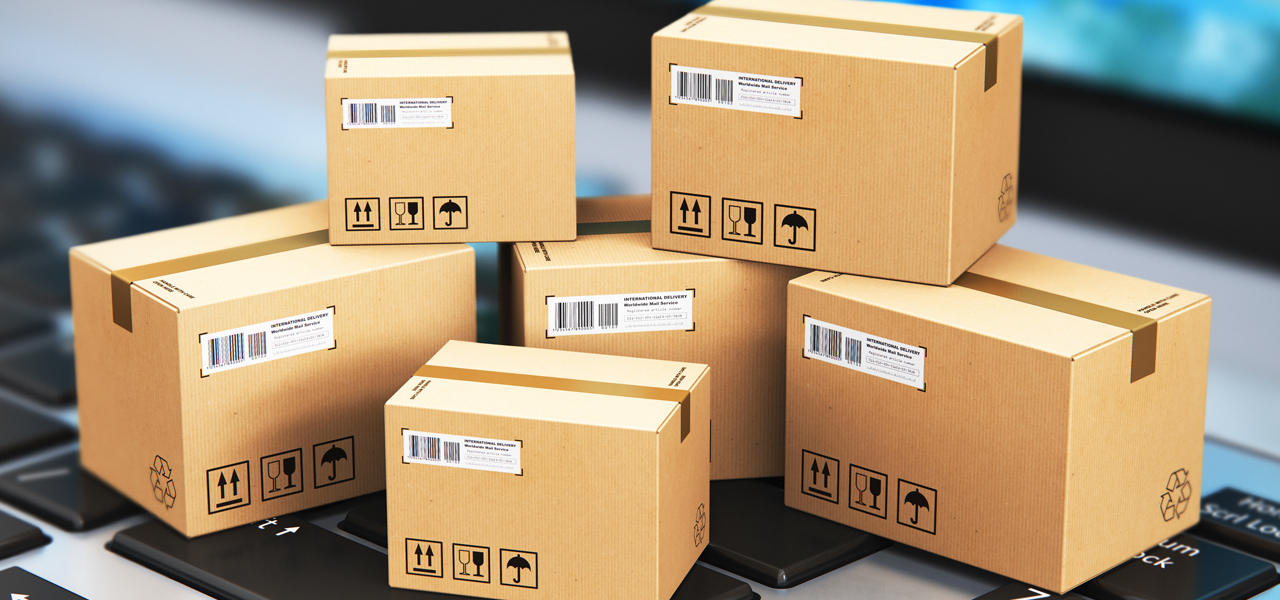Over Packed: Unnecessary packaging in e-commerce
With online shopping becoming an essential for many consumers, retailers have been scrutinised over the amount of unnecessary packaging they use for their online orders. With figures showing that 40% of online shoppers are being sent deliveries with packaging that is too big for what they ordered, Callum Tyndall explores the issue
With online shopping becoming steadily more dominant in the retail sphere, it is paramount that online retailers are able to address all of the same concerns that are present in brick and mortar stores. Notable among issues particular to online retail in the last few years is the use of excessive packaging for delivered items.
With a recent survey by Clouder finding that 40% of online deliveries are coming with packaging too big for the item ordered, and a full 72% of consumers surveyed believing that retailers use too much packaging for online orders, the industry has a large issue to address. The question to be asked, however, is whether there is a reason for the retailers’ use of so much packaging and, in a field in which online retail is becoming so predominant, are retailers motivated enough to change their approach?
One million METRIC TONNES of waste
“With online shopping positioned at the forefront of the retail landscape, retailers can certainly make more of an effort to minimise the use of unnecessary delivery packaging for online orders,” said Clouder.co.uk CEO Tomas Zalatoris. “Retailers who take the initiative to use the appropriate amount of delivery packaging and protective materials for their online orders – will not only improve their reputation, but help reduce the adverse environmental effects of excessive packaging waste.”
With Clouder’s survey consistently finding that, across scenarios, upwards of 50% of consumers are encountering issues related to the amount of packaging used with online orders, it is readily apparent that e-retailers have a problem with packing. According to Clouder’s report, this trend of over packing is creating an estimated extra million metric tonnes of waste every year. Even setting aside the negative customer experience, the ecological impact of such an amount of waste is not to be underestimated.
Retailers can certainly make more of an effort
It should be noted, however, that Clouder’s survey sample was relatively small: just 892 consumers out of a market that in the UK alone was valued at £60.43bn in 2016 (Centre for Retail Research - Online Retailing: Britain, Europe, US and Canada 2017). And while each of those surveyed was a frequent user of online retailers, making an online purchase for delivery at least once a month, there is a not insignificant gap between the percentage of consumers who “believe retailers use too much delivery packaging for online orders” (72%) and those who received a delivery with “packaging that is too big for what they ordered” (40%). Clouder’s data should certainly not be discounted – a million metric tonnes of waste is not a figure to ignore lightly – but the sample size means that further extrapolation may be more questionable.

An attempt to reduce costs
With such a colossal value attached to the industry, it is important to oversee whether retailers are meeting their responsibilities or if we are in fact just witnessing a change that we haven’t yet figured out how to properly deal with. While Clouder’s survey highlighted issues in the UK, elsewhere in the world the Australian Packaging Covenant (APC) questions whether there is actually that much of a difference between online and in-store purchases when it comes to the packaging involved.
As Benjamin Punchard, senior global packaging analyst at Mintel, notes: “When consumers complain about the excessive packaging when they buy online they are generally not referring to the branded packaging (which in virtually 100% of the cases is the same as would be bought from a brick and mortar store) but to the transit boxes. Essentially these boxes are to e-commerce what bags are to physical shops.”
These boxes are to e-commerce what bags are to physical shops
Similarly, the Australian Retailers Association noted to CHOICE, the leading consumer advocacy group in Australia, that they didn’t have any numbers to support that extra packaging is used for online purchases (although they did note some additional packaging may be required to ensure intact delivery). The Packaging Council of Australia similarly argued, perhaps predictably given their interest, that product packaging hasn’t increased but has in fact been minimised as companies seek to cut costs.
Cost is the one concern, however, that has been raised by the Waste Management Association of Australia. According to the association, while innovation is being encouraged by the desire to cut costs, the sheer volume of online sales is likely to stunt any benefit arising from this. Aside from the environmental impact, it is believed that the cost of dealing with the ever-increasing waste will almost inevitably be passed back on to the customer.
Fit for purpose PROduct packaging
However, while the issue is too important to be dismissed, it should be noted that improvements have been made. Macfarlane Packaging’s 2017 survey found that 15% of those surveyed reported excess packaging, which, though not an insignificant number, is drastically lower than the 41% reported the year before. Importantly, it has been noted that while retailers are improving, it is this final hurdle that could prove the difference between various competitors in the eyes of their customers.
As observed in Clouder’s report, 62% of respondents would feel more positively about a brand if it consciously tried to cut down the amount of unnecessary packaging.
Laurel Granville, marketing director at Macfarlane Packaging, said: “Britain’s online retailers have clearly listened to their customers and are increasingly harnessing the power of good packaging. We know from our customers and from recent research how important consumers view their unboxing experience and it’s great to see retailers responding in this way.
“By making their packaging fit for purpose, online retailers are taking big steps to improve the experience for their customers, reduce damages and, therefore, returns.”
Online retailers are taking big steps to improve the experience
She added: “Although our survey reveals a commendable improvement from online retailers, it also lays bare the considerable scope that exists for the sector to capitalise on the potential for packaging to be a real differentiator for them.”
Retailers are clearly aware of the issue of excess packaging and are beginning to make an effort to combat it. However, the question that remains is whether they have significant motivation to stamp it out. Juggernauts such as Amazon have become so critical to people’s lives that it is hard to believe that it will be easy for consumers to stage a significant enough protest that they will take notice of a relatively small issue. For now, it seems as if the retailers are making the right moves on their own, but it will be important to maintain the pressure and watchfulness on the issue if they are to truly change their approach.
